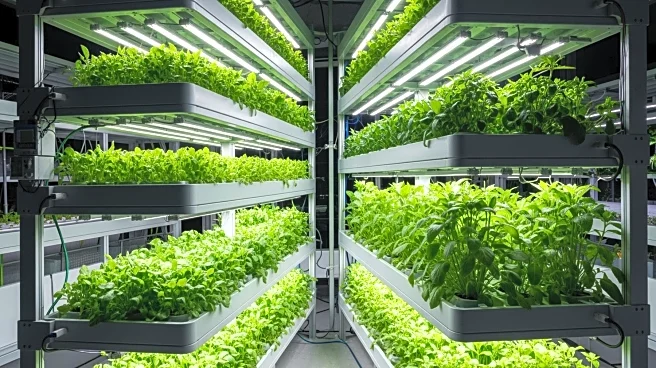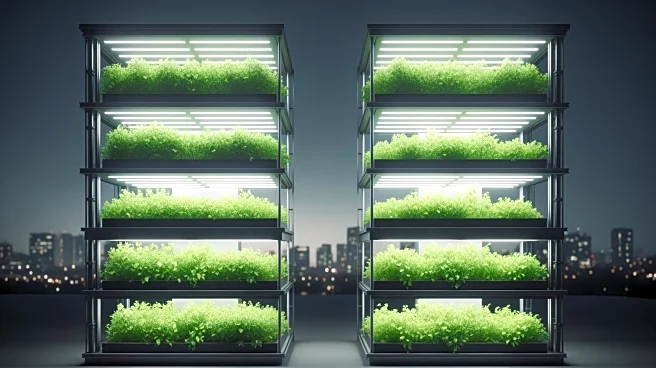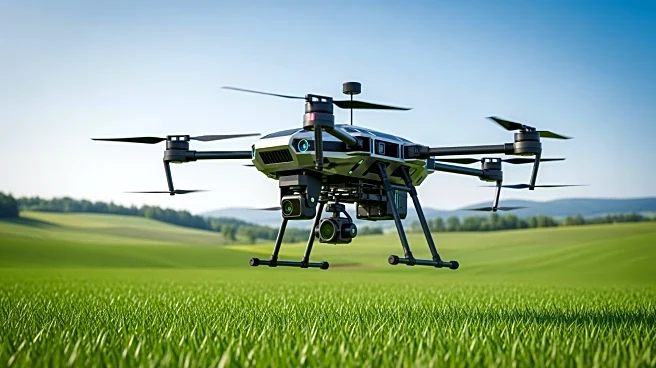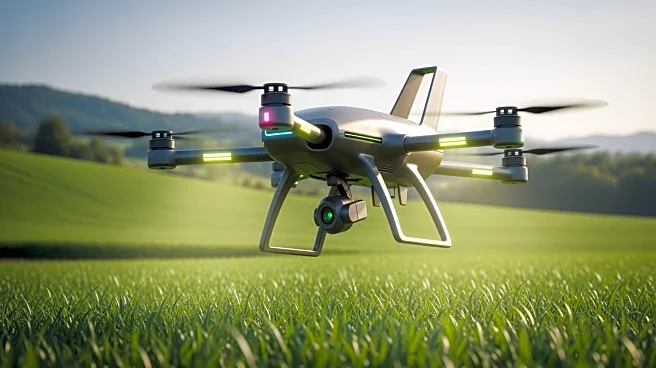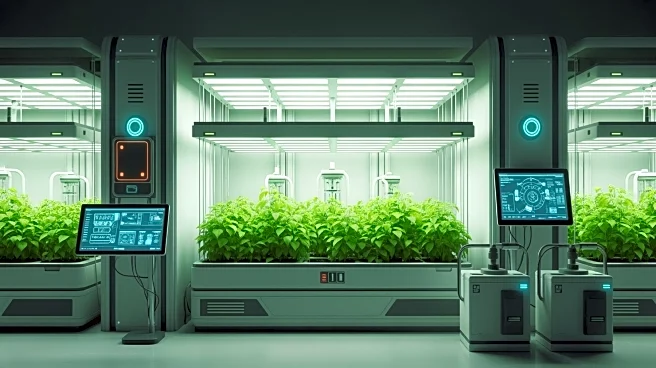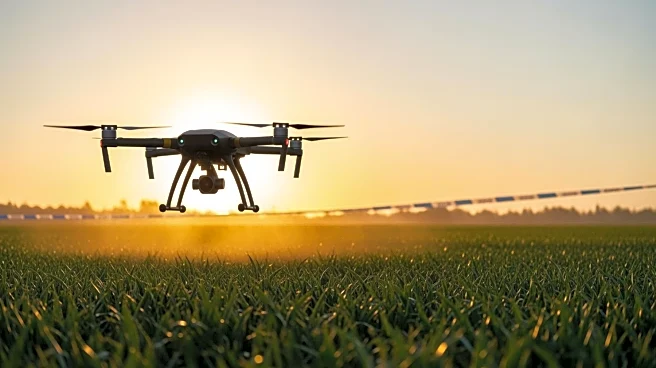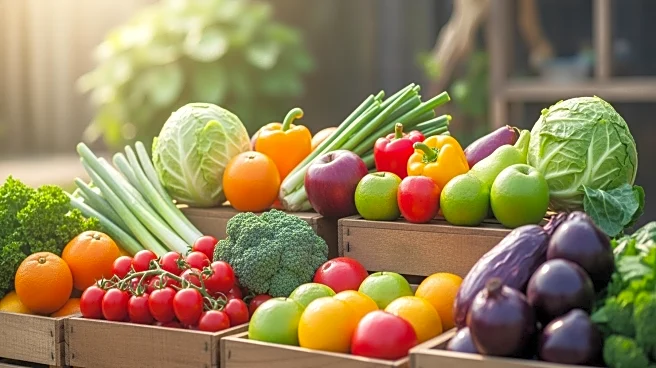What's Happening?
The vertical farming market is anticipated to experience significant growth, with projections indicating it will reach USD 39.72 billion by 2032. This growth is driven by factors such as increasing global
population, urbanization, and the demand for sustainable food production. Vertical farming utilizes vertically stacked layers to cultivate crops in controlled indoor environments, optimizing land use and minimizing water and pesticide usage. Technological advancements, including LED lighting, HVAC systems, smart sensors, and robotics, are enhancing operational efficiency and enabling year-round crop cultivation. North America is leading the adoption of vertical farming due to high consumer demand for organic produce and technological readiness, while Europe and Asia-Pacific are also witnessing substantial growth.
Why It's Important?
The expansion of the vertical farming market is crucial for addressing challenges related to food security and sustainable agriculture. As urbanization continues to reduce available arable land, vertical farming offers a viable solution for producing fresh, locally sourced food in urban areas. This method of farming supports environmental sustainability by reducing resource consumption and minimizing the ecological footprint of agriculture. Major companies in the sector, such as AeroFarms and Bowery Farming, are investing in automation and IoT integration to enhance productivity and expand their market presence. The growth of this market could lead to increased investment in innovative farming solutions and contribute to the global shift towards sustainable agricultural practices.
What's Next?
The vertical farming industry is expected to continue its expansion, with strategic partnerships and technological innovations driving competitive advantage. Companies are likely to focus on automation and IoT integration to improve efficiency and expand into new regions. As consumer demand for organic produce grows, further investments in vertical farming technologies are anticipated. The market's growth may also prompt increased regulatory attention and support for sustainable agriculture initiatives, potentially influencing public policy and investment strategies in the agricultural sector.
Beyond the Headlines
Vertical farming represents a transformative approach to agriculture, with potential implications for urban planning and food distribution networks. As cities grow and land becomes scarcer, vertical farming could play a key role in reshaping urban landscapes and reducing the carbon footprint of food production. The integration of advanced technologies in farming practices may also drive innovation in related sectors, such as renewable energy and smart city infrastructure. Ethical considerations regarding the accessibility and affordability of vertically farmed produce may arise, prompting discussions on equity in food distribution.
